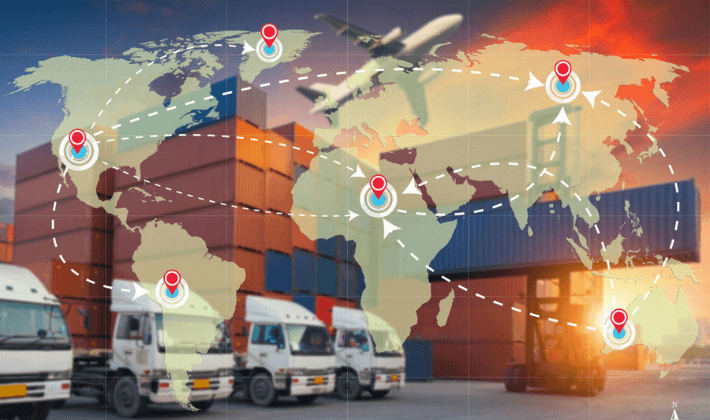
Where’s your shipment of widgets right now? Where was it yesterday? Where will it be tomorrow? In three days? At the end of the week? These are pertinent questions any shipper or supply chain manager has on a daily (or even hourly) basis. As the complexity of global supply chains has grown, so has the demand for oversight at every leg of the journey. Now, as global supply chains finally start to realign post-COVID-19, there’s even more emphasis on the concept of track and trace.
The underlying theory is a simple yet powerful one: if you can anticipate disruption, you can avoid it. It all starts by knowing where your goods are at any given time.
See More, Know More, Control More
Visibility is critical throughout your freight’s journey from Point A to Point B, particularly as the number of destinations, custody changes, and checkpoints increases. The potential for disruption increases with each new variable. Track and trace bring transparency to freight’s entire journey, regardless of the number of stops along the way.
Consider this in the context of a black swan event like COVID-19. Your shipment of widgets was due in Italy, but the borders closed due to the pandemic. Now, that shipment is stuck in the UAE and needs to get to a port in Virginia, USA. Without the visibility to see where it is, you can’t change the course, which means waiting for it to return to the point of origin—or worse, ending up dry-docked somewhere within the supply chain.
Track and trace in the context of COVID-19 becomes even more evident when you consider the rise of e-commerce. Now, it’s not one big shipment waylaid due to supply chain disruption — it’s thousands for every retailer, totaling millions of shipments in limbo around the world. Track and trace allows ecommerce shippers to act with intelligence, rather than wait for deliveries to work themselves out.
A Focus on Track and Trace
Track and trace has found a spotlight during the pandemic as shippers start to apply these methods across industries. In early 2020, for example, the Digital Container Shipping Association (DCSA) published a standardized set of guidelines for container track and trace. The standards will, “reduce complexity, cut costs and, over time, enable better management of end-to-end supply chains.” For many shippers, these standards come at a time when track and trace is instrumental in navigating COVID-19 complexities.
The Rise of IoT for Track and Trace
While conventional track and trace is possible, the standard today is IoT (Internet of Things) for visibility. It costs shippers next to nothing to affix beacons to shipping containers or use RFID (radio-frequency identification) labeling to enable real-time visibility for shipments around the world. Many shippers and 3PL already do this as standard practice, and COVID-19 is encouraging many more to adopt these standards and technologies.
Knowledge is power, and for shippers, the knowledge of where goods are in a complex supply chain gives them the power to act, react, and be proactive. If COVID-19 has taught us anything, it’s that these capabilities are vital in avoiding catastrophic supply chain setbacks and breakdowns.
